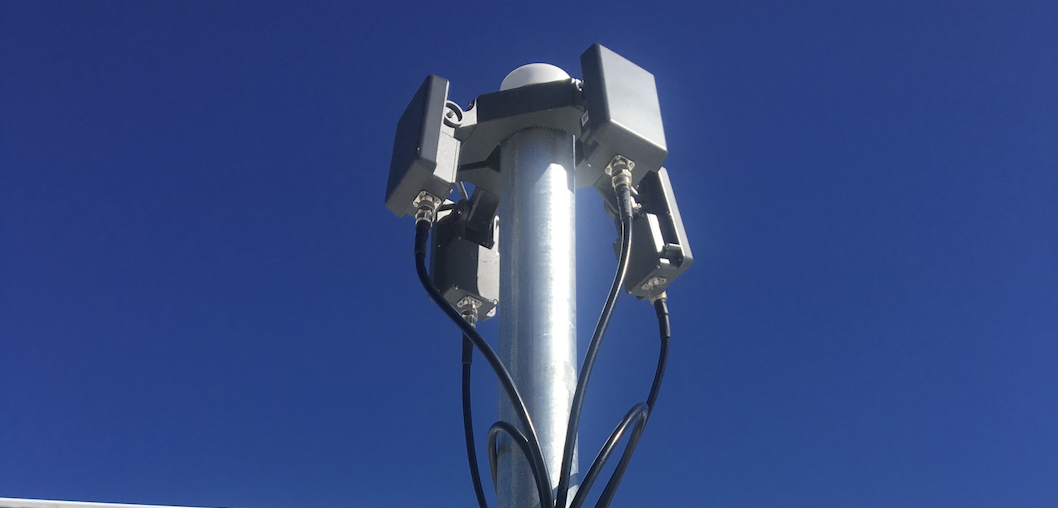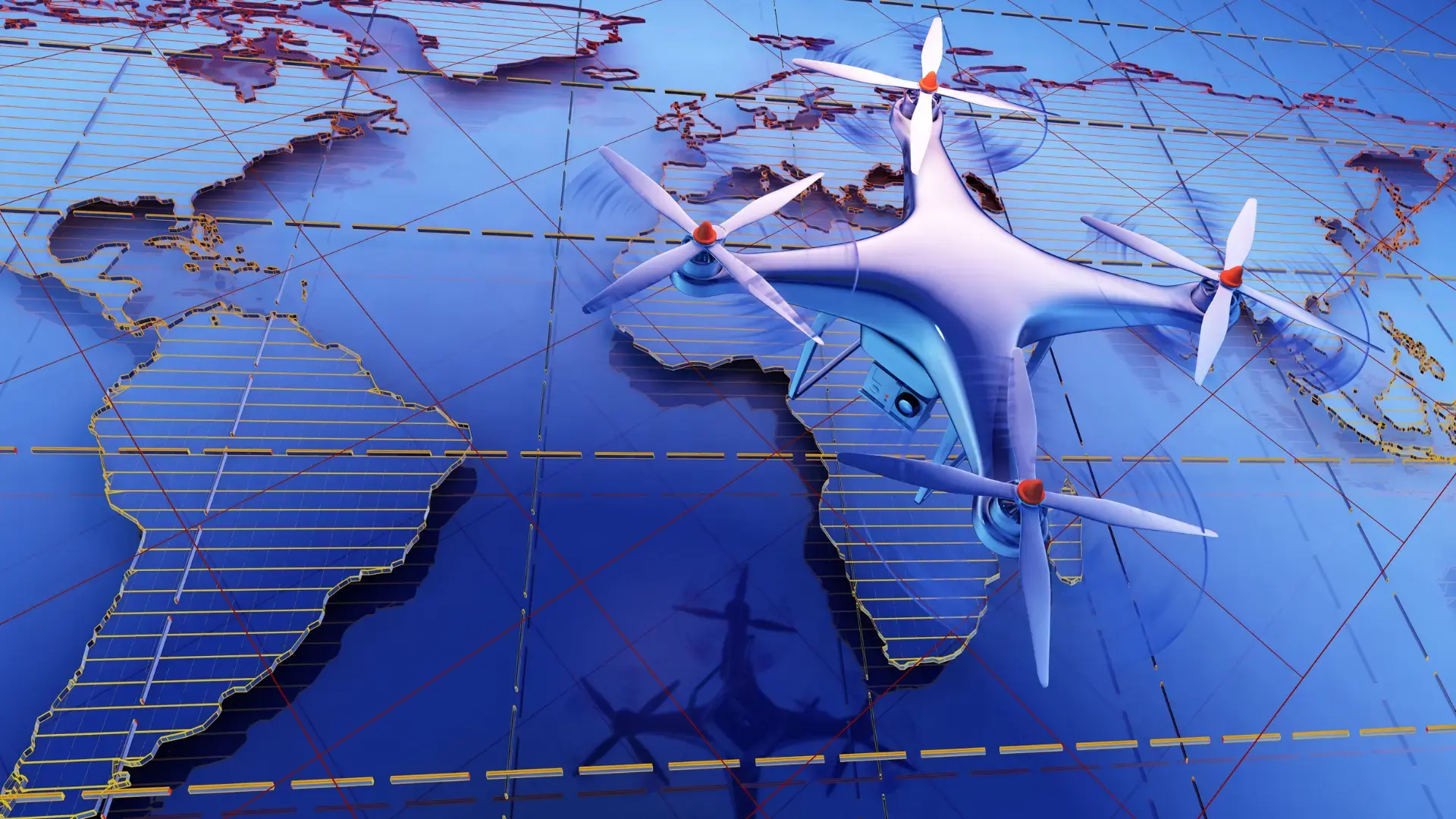Why do we need to detect drones in the air?
A few characteristics of modern commercial drones make them an aerial threat for facilities like airports, stadiums, oil and gas refineries and prisons. A drone flying close to a runway poses danger to airplanes during takeoff and landing. Drones can also be a threat to stadiums, prisons and oil & gas because of their ability to carry payloads bypassing ground security.
Therefore, Security teams need a way to detect drones in the air and be aware of what is flying in their airspace.
Is it possible to detect and track drones in the air?
There are various technologies and solutions that can help security teams track drones. Security teams can use these solutions to know the GPS location of the drone, its type, speed, and altitude. Modern systems can also provide the pilot’s live GPS location, particularly with foundational technology like Remote ID. The most reliable drone detection solution is one that can adapt to each facility's needs by integrating various hardware sensors into one software interface, like the AirGuard platform.
What is drone detection?
Drone detection technology identifies and tracks unmanned aircraft systems (UAS) to secure a designated airspace. The most effective solutions use a tiered approach, as different sensors are required to detect different types of drone threats. The AirGuard software is a central intelligence hub that integrates these technologies to provide real-time insights. Its detection capabilities are built upon four key sensors:
-
Drone Detection using Remote ID Sensors: Our AirGuard platform utilizes Remote ID Detection to identify compliant drones operating within the airspace. This technology works by detecting the drone's broadcasted signal, which allows us to track the operator's live GPS location. This detection capability is effective for compliant drones that are within a 2 to 5-mile range, providing a foundational layer for monitoring airspace activity and enabling timely action.
-
Drone Detection using Radio Frequency (RF) Technology: For drones that are not compliant with Remote ID, Radio Frequency (RF) detection provides another critical layer of security. This technology uses RF sensors that passively listen to and monitor frequencies for the communication link between a drone and its pilot to determine the drone's location.
-
Drone Detection using Directional RF (DF) Sensors: To gain more precise intelligence, Directional RF (DF) Detection is used. This advanced technology builds on RF detection to not only identify a non-compliant drone but also determine its direction of travel, adding a critical vector-tracking capability.
-
Drone Detection using Radar: For the highest level of security, radar detection is essential for identifying all flying objects, especially those that are not transmitting any signals. High-resolution radars are specifically designed for drone detection and tracking. Reflected signals can be compared to a database for drone characterization, and this signal processing greatly improves detection performance and allows for fewer false positives.
-
Drone Detection using Visual Tracking: As part of a complete detection system, AirGuard integrates with PTZ (Pan-Tilt-Zoom) cameras to create and relay a visual record of a drone incident. The software cues a PTZ camera with the drone's GPS location, so the camera can pan, tilt, and zoom to the correct area to capture a visual of the drone. While not an ideal first line of defense, it is a valuable tool for recording drone incidents for real-time and future review.
How do I know which drone detection technology is best for my facility?
This depends on a number of factors, including your requirements, budget, security needs, and the layout of the facility. The best place to start is with our Basic tier of detection, which focuses on Remote ID to give you an idea of the compliant drones flying in your area. If your data shows a high number of unidentified flights, you can upgrade to our Essential tier, which adds RF detection to identify non-Remote ID drones. Security teams can then base decisions on whether higher tiers, such as those with radar or visual detection, are needed based on the insights gained from real drone flight data.
Airsight also provides a 30-day pilot demo, where we can install sensors at your facility and give you actionable intelligence on what is happening in your airspace. Schedule a call with us today to learn more about our demo.
How many sensors does my facility need to detect drones properly?
It depends on your facility and detection needs. One factor is the amount of potential signal interference caused by the layout and environment. If you are surrounded by tall buildings, you might need multiple sensors to achieve the level of detection you need. Our airspace security experts conduct a thorough walk-through and site survey of your facility and suggest the best Remote ID, RF, Radar, and Visual configurations to match your needs and budget.
What is the Tiered approach to drone detection?
No one type of detection technology can detect all drones. This is achieved when different technologies are layered, and the data from the sensors is integrated into a single software platform like AirGuard. Our packages are designed to provide a clear path for enhancing your detection capabilities:
-
Basic Tier: Includes Remote ID detection and real-time alerting, best suited for organizations that need to detect FAA-compliant drones and their pilots.
-
Essential Tier: Layers Enhanced RF Detection on top of the Basic tier to identify a wider range of drones that do not broadcast Remote ID signals.
-
Enhanced Tier: Adds Directional RF Detection to not only identify non-compliant drones but also determine their direction of travel.
-
Complete Tier: Provides the highest level of security by adding Radar Detection and Visual Camera Integration. This allows for the detection of all flying objects (even non-transmitting ones) and provides visual verification of the threat.
How can you benefit from drone detection?
Our drone detection software helps you:
-
Identify drone and pilot activity in real-time.
-
Alert the security team to the drone make, model, altitude, and GPS location of both the drone and its pilot.
-
Improve reaction time by providing advanced warnings and alerts via pop-ups, email, and SMS.
-
Provide real-time monitoring of drone activity to allow for actionable intervention.
-
Record and maintain data to use as digital evidence in investigations.
-
Replay any flight path to analyze specific detections in minute detail.
What kind of organizations and facilities need to install drone detection?
We are seeing different types of organizations installing drone detection. Since drones can collide with planes, airports need drone detection to keep track of drones around the runway. Because drones can carry payloads, organizations like stadiums, oil & gas plants, critical infrastructure, and prisons also need detection technology. Law enforcement, corporations, and live event organizers also deploy these solutions to tackle aerial threats.
Who provides drone detection technology?
Airsight provides you with everything you need to detect drones in the air. Our experts analyze your location, suggest the best configurations, and set up each sensor at your location.
Our drone detection software platform, AirGuard, acts as the central intelligence hub, integrating all sensor data into one easy-to-use interface. It provides advanced features like geofencing, real-time alerts, whitelisting, and evidence capture to give your team actionable insights to secure your airspace.
Schedule a call with our security experts and ask about our 30-day demo to help you get real data on the drones flying in your airspace.









